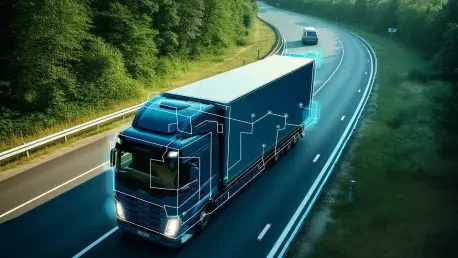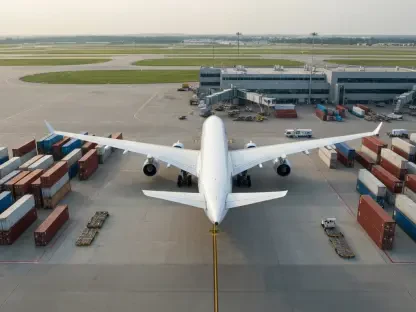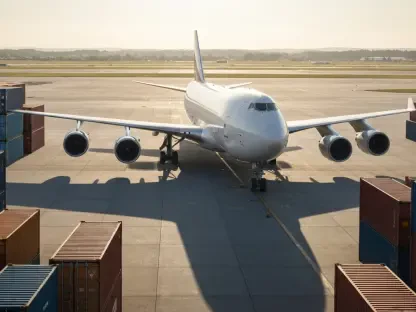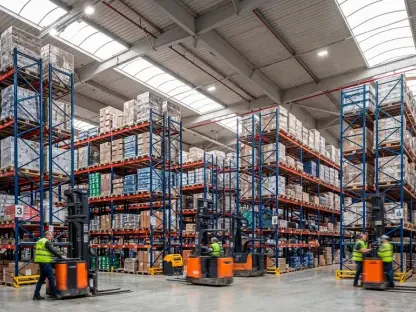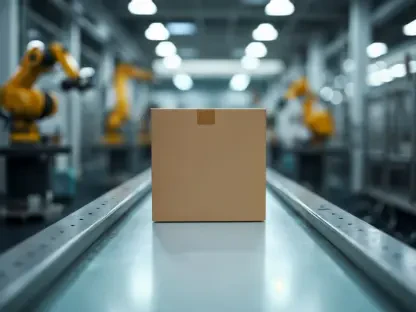In a world where smartphones handle everything from banking to boarding passes, why does a multi-billion-euro industry like EU freight transport still drown in paper? Picture a truck driver at a border checkpoint, fumbling through stacks of documents while hours tick by, costs pile up, and deadlines slip away. This outdated reality, stubbornly rooted in 2025, clogs the arteries of cross-border logistics across the 27 member states. Yet, a groundbreaking regulation is steering the sector toward a digital dawn, promising to replace paper trails with seamless data streams. What could finally shift this industry into the modern age, and how does collaboration fuel this transformation?
Why Is Freight Still Stuck in the Paper Age?
Despite technological leaps in nearly every sector, EU freight transport remains tethered to paper-based systems that feel like relics of a bygone era. Invoices, consignment notes, and customs forms—often required in multiple copies—create a bureaucratic maze for drivers and companies navigating cross-border routes. This analog approach not only slows down operations but also breeds errors, with misplaced or incomplete documents stalling shipments at checkpoints for hours.
The resistance to change stems from a fragmented landscape where each country enforces its own rules and document formats, making a unified digital shift seem daunting. Logistics firms, especially smaller ones, hesitate to invest in technology without clear standards or guarantees of compatibility. Meanwhile, the stakes are high: inefficiencies drain billions annually, eroding competitiveness in a global market that thrives on speed and precision.
This stubborn reliance on paper sets a critical backdrop for understanding why a bold regulatory push is needed. The question looms—how can an industry so vital to Europe’s economy break free from these outdated chains without a coordinated, collective effort?
The Urgency of Digitalizing EU Freight Transport
The need for digital transformation in EU logistics screams for attention as paper systems inflate costs and frustrate stakeholders at every turn. Border delays, where drivers wait endlessly for manual checks, translate into lost time and money, with some inspections dragging on for up to 45 minutes per stop. These bottlenecks ripple through supply chains, disrupting just-in-time deliveries and straining customer trust.
Beyond delays, inconsistent national requirements compound the chaos, forcing companies to juggle a patchwork of rules that vary from one member state to another. This not only burdens operators but also puts the EU at a competitive disadvantage against regions with more streamlined, tech-driven logistics. The economic toll is staggering, with administrative inefficiencies siphoning off resources that could fuel growth.
Enter the eFTI Regulation, enacted in 2024 and now gaining traction in 2025, poised to tackle these deep-rooted issues. Designed to standardize digital data exchange across all member states, this legal framework offers a lifeline to an industry desperate for efficiency, setting the stage for a long-overdue overhaul of cross-border freight operations.
Breaking Down the eFTI Regulation: A Blueprint for Change
At its core, the eFTI Regulation (EU 2020/1056) lays out an ambitious plan to drag freight transport into the digital era with a unified system for data sharing. It replaces the chaotic jumble of national document demands with a standardized legal framework, ensuring that digital records are recognized equally from Lisbon to Tallinn. This shift eliminates the guesswork for companies navigating diverse rules, smoothing out cross-border hiccups.
The numbers paint a compelling picture of its potential impact. According to the EU Commission, eFTI could save up to 27 billion euros in administrative costs over the next 20 years by slashing document processing times. Operationally, inspections that once took nearly an hour could shrink to mere minutes, while emergency responders gain instant access to cargo data during crises like vehicle breakdowns, enhancing safety and response times.
Technically, the regulation hinges on eFTI platforms, where companies store transport data, and eFTI gates, through which authorities access it securely under strict conditions. Take road transport as an example: a driver crossing from Germany to France no longer needs a briefcase of papers—just a digital record accessible via the platform, verifiable in seconds. This structured, regulated setup promises to untangle the knots that have long plagued logistics, paving the way for a more fluid system.
Voices of Change: Collaboration as the Cornerstone
Industry leaders underscore that the success of eFTI hinges not on solo efforts but on shared commitment. Andreas Nettsträter, CEO of the Open Logistics Foundation, argues that fragmented, proprietary solutions only deepen the divide, while collaborative projects light the path forward. “No single company or country can solve this alone—teamwork is the only way to build systems that work for everyone,” he notes, pointing to the power of collective innovation.
Raoul Wintjes from DSLV echoes this sentiment, highlighting the pitfalls of isolated approaches that fail to scale across borders. He champions initiatives like the electronic consignment note (eCMR), developed by 20 diverse organizations under the Open Logistics Foundation, as proof of what teamwork can achieve. This open-source tool, freely available to all, has already streamlined documentation for countless firms, showing how pooled expertise can outpace individual efforts.
Real-world examples add weight to these insights. Projects like Silicon Economy and eFTI4EU bring together stakeholders from multiple EU nations to test and refine digital tools, from data standards to secure sharing protocols. These cross-country efforts reveal a growing consensus: only by working hand-in-hand can the logistics sector build a digital ecosystem that serves every player, no matter their size or location.
Making eFTI Work for Everyone: Practical Steps Forward
Turning the promise of eFTI into reality demands actionable strategies that bridge the gap between regulation and implementation. One key step is adopting open-source solutions, such as those offered by the Open Logistics Foundation, which provide free, adaptable tools to replace costly proprietary systems. This approach levels the playing field, allowing even resource-strapped firms to join the digital wave without breaking the bank.
Inclusivity must also take center stage, especially for small and medium-sized enterprises (SMEs) that risk being sidelined by high transition costs. Tailored support, such as training programs or subsidized technology access, can ensure these smaller players keep pace with larger corporations already equipped with robust IT setups. Governments and industry bodies should prioritize resources to prevent a digital divide from widening.
Finally, stakeholders must engage in collaborative projects and prepare for compliance by setting up secure eFTI platforms for data storage and sharing via eFTI gates. Participation in multi-stakeholder initiatives fosters alignment and expertise exchange, while technical readiness ensures smooth interaction with authorities. Across the board—from global logistics giants to family-run transport firms—a harmonized, cooperative mindset remains the linchpin for transforming EU freight into a digital powerhouse.
Reflecting on a Digital Leap
Looking back, the journey to digitalize EU freight transport through the eFTI Regulation marked a pivotal chapter in logistics history. The shift from paper to data-driven systems tackled inefficiencies that once seemed insurmountable, proving that even entrenched practices could bend under the weight of collective resolve. Collaboration emerged as the unsung hero, binding diverse players into a unified force for change.
As the dust settled, the path ahead became clear: stakeholders had to sustain this momentum by investing in open-source tools and inclusive policies that kept every company in the game. Continuous engagement in joint projects was essential to refine and expand the digital framework. Beyond that, a commitment to adaptability promised to meet future challenges head-on, ensuring that the hard-won gains of eFTI would endure for decades to come.
